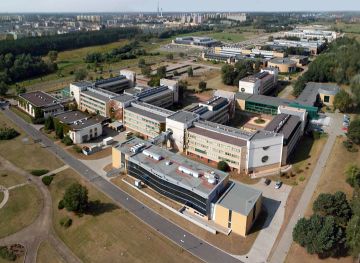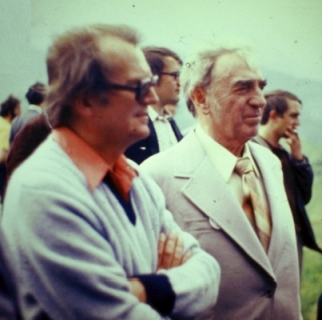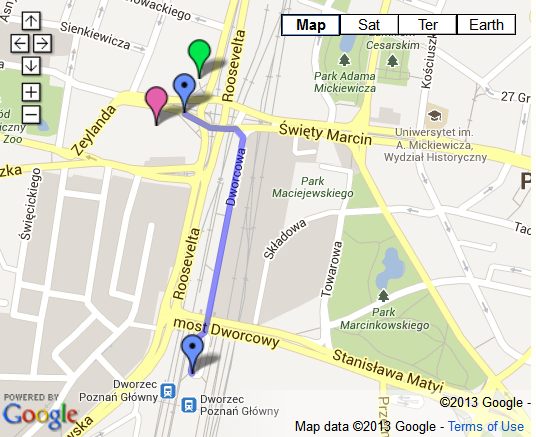Plasmonics
Photonics (session VII on Dec. 5),
and
Magnonics and Metamaterials including:
Magnonic Crystals and Quasicrystals (session VIII on Dec 5),
Phononics and Magneto-elastic Interactions (session IX on Dec 5),
Skyrmions (session IX on Dec 6),
Phase-sensitive Effects in Magnonics (session X on Dec 6),
Magnonic Systems under External Bias (session XII on Dec 6),
Magnetic Systems - Fabrication (session XIII on Dec 6).
|
Research Topics of the Workshop |
In the area of quantum technologies, the workshop covers
the following topics:
- quantum information processing
- cavity QED
- circuit QED
- microwave photonics
- quantum cryptography
- quantum machine learning
- quantum nonlinear optics
- plasmonics and photonics
- ultrastrong-coupling of light and matter
- quantum dissipative engineering
- quantum entanglement
In the area of magnonics and metamaterials, we are mainly
interested in:
- spin waves in confined geometries and (quasi)periodic structures
- magnetization switching in the systems with shape anisotropy
- stabilization and dynamics in magnetic textures, domain structures, skyrmions, curvilinear magnetic structures
- phononics and magneto-elastic interactions
- phase-sensitive effect in magonics
- magnonic metamaterials and magnetic multilayers
- micromagnetic simulations
- experimental techniques for characterization of magnetic structures and for measurements of magnetization dynamics
We are also interested in the contributions from other subjects
connected to quantum technologies, magnetism, plasmonics and
photonics.
The talks of doctors and professors are scheduled for 20 min.,
while those of Ph.D. students will be for 15 min.
|
Speakers of the Memorial Session (December 5) |
- Ryszard Tanaś (Poznań):
Memories of Prof. Stanisław Kielich
- Natalia Kielich-Buchowska (Poznań):
Memories of Prof. Stanisław Kielich (invited talk)
Speakers of the Sessions on Quantum Technologies (Nov
28)
and Nonlinear Optics (Dec 5)
PROGRAMME
- Shilan Ismael Abo (Poznań):
Photon-phonon blockades
- Ievgen Arkhipov (Olomouc)
Revealing nonclassicality of Gaussian states of light
- Karol Bartkiewicz (Poznań):
Measuring distance between points in Hilbert space with photons
- Antonin Černoch (Olomouc):
Beam-splitting tricks (invited talk)
- Grzegorz Chimczak (Poznań):
Four-level diamond-type atom as a field-field coupler
- Izabela Domagalska (Zielona Góra):
Influence of a charge asymmetry of cores on the
physical state of the positively charged molecule ion
- Waldemar Głaz (Poznań):
Ab initio vs model extended techniques of computing linear
and nonlinear collisional polarizabilities in H2-H
supermolecules.
- Andrzej Grudka (Poznań):
Time travel and the Second Law of Thermodynamics
- Krzysztof Grygiel (Poznań):
Anomalous rotational diffusion in electric fields
- Kateřina Jiráková (Olomouc):
Experimental counterfeiting of quantum money
- Joanna Kalaga (Zielona Góra):
Generation of squeezed states in a quantum-chaotic system
(invited talk)
- Marcin Karczewski (Poznań):
Monogamy of Particle Statistics in Tripartite Systems
Simulating Bosons and Fermions
- Anna Kowalewska-Kudłaszyk (Poznań):
Photon blockade via squeezing
- Paweł Kurzyński (Poznań):
Evolution of negative probability distributions
- Zakarya Lasmar (Poznań):
On composite behaviour of complex quantum systems: sometimes
entanglement needs to be backed by interaction
- Karel Lemr (Olomouc):
Diagnosing quantum relays by means of collective
entanglement witnesses (invited talk)
- Wiesław Leoński (Zielona Góra):
Quantum steering in a system of three qubits – some remarks and findings
(keynote talk)
- Adam Miranowicz (Poznań):
Deterministic quantum nonlinear optics without photons
- Mateusz Nowotarski (Zielona Góra):
Entanglement properties of highly symmetric qudit states
- Małgorzata Paprzycka (Poznań):
Raman spectroscopy in the investigation of proteins
- Jan Peřina, Jr. (Olomouc):
Auto-ionization in the presence of a neighbor atom
(keynote talk)
- Jan Soubusta (Olomouc):
Experimental testing of three-qubit nonlocality (invited
speaker)
- Vishal Vashistha (Poznań):
Light channeling, bending and splitting via local
modification of interfaces of a photonic-crystal slab
- Maciej Wiesner (Poznań):
Can surface plasmons break symmetry in topological
insulators and graphene? (invited talk)
- Ryszard Tanaś (Poznań):
Violation of monogamy relations for negativity in a
three-atom system (keynote talk)
- Vasily V. Temnov (Le Mans):
Nonlinear magneto-plasmonics and Wood’s anomaly probed by
magnetic second-harmonic generation (keynote talk)
- Vojtěch Trávníček (Olomouc):
Experimental measurement of nonlinear entanglement witness
by hyper-entangling two-qubit states
|
Speakers of the Sessions on Magnonics and Metamaterials
(December 5-6) |
- Nandan Babu Kuttath Padi (Poznań):
Magnons and phonons in CoFeB/Au multilayer structures
- Grzegorz Centała (Poznań):
The effect of spin wave pinning on FMR frequency in periodic structures
- Gabriel D. Chaves-O'Flynn (Poznań):
Thermal Stability of Soft Ferromagnetic Nanorings
- Emerson Coy (Poznań):
High temperature magneto dielectric thin
films with low magnetic damping (invited talk)
- Hubert Głowiński (Poznań):
Magnetization damping in polycrystalline CoFe films
- Piotr Graczyk (Poznań):
Electric-field-driven enhancement of magnetization dynamics in magnetoelectric heterostructures
(invited talk)
- Joachim Graefe (Stuttgart):
Nanomagnetism in the X-Ray Spotlight
(invited talk)
- Batłomiej Graczykowski (Poznań):
Elastic properties of few nanometers thick
membranes (invited talk)
- Paweł Gruszecki (Poznań):
Reflection of spin wave beams
- Konstanin V. Guslienko (San Sebastian):
Magnetic skyrmion stability and dynamics (keynote talk)
- Jarosław Kłos (Poznań):
Hartman effect for spin waves in exchange
regime
- Dominika Kuźma (Kraków):
Modeling of configuration switching in
systems of macrospins
- Tadeusz Lulek (Rzeszów): A three-magnon qubit: an example of
Galois symmetry of Bethe pseudoparticles (invited talk)
- Filip Lisiecki (Poznań):
Reprogrammability and scalability of magnonic Fibonacci quasicrystals
(invited talk)
- Igor L. Lyubchanskii (Donetsk):
Goos-Haenchen effect at Brillouin light scattering (keynote
talk)
- Szymon Mieszczak (Poznań):
On-demand magnonic crystal induced by an
optical interference pattern
- Justyna Rychły (Poznań):
Theoretical studies of spin wave dynamics
in planar magnonic quasicrystals
- Paweł Sobieszczyk (Kraków):
Magnetization reversal mechanisms in
nanopatterned thin films with perpendicular
magnetic anisotropy
- Krzysztof Szulc (Poznań):
Magnetization reversal in the array of nanobars
- Żaneta Świątkowska-Warkocka (Kraków):
Laser synthesis of composite magnetic particles
- Aleksandra Trzaskowska (Poznań):
Periodic nanostructures investigated using BLS (invited
talk)
- Miłosz Zdunek (Poznań):
Investigation of magnons and phonons by BLS in bilayer substituted YIG samples
- Mateusz Zelent (Poznań):
Controlled motion of skyrmions in magnonic antidot lattices
- Piotr Zieliński (Kraków):
Is a discontinuous phase transition of second
order possible in magnetic systems? (keynote talk)
|
General Information about the Workshop |
Conference language: English
Main organizers: Krzysztof Grygiel, Jarosław Kłos, Maciej Krawczyk,
and Adam Miranowicz
Organizing Committee:
Karol Bartkiewicz, Grzegorz Chimczak, Anna Kowalewska-Kudłaszyk.
Contact: If you would like to participate in the
symposium please send an email to Adam Miranowicz at
miran(at)amu.edu.pl
How to get to the workshop venue
 Faculty of Physics of Adam Mickiewicz University - the
workshop venue
#1 DOJAZD Z DWORCA GŁÓWNEGO PKP NA WYDZIAŁ FIZYKI
Trzeba przejść pod peronami na Dworzec Zachodni i pojechać
dowolnym szybkim tramwajem "PST" (tj. PeSTka nr 12 lub 14) w
kierunku Dworca Sobieskiego.
Najlepiej dojechać tramwajem do samego końca, tj. do Dworca
Sobieskiego (ok. 15 min.). Następnie pieszo przez strzeżony
przejazd kolejowy wzdłuż trasy rowerowej na Wydział Fizyki (ok. 10
min.).
Można też wysiąść z tramwaju
na ul. Szymanowskiego i przesiąść się na autobus nr 98,
z którego należy wysiąść na przystanku o nazwie "Kampus UAM
Morasko".
#2 DOJŚCIE Z DWORCA GŁÓWNEGO PKP DO DS "JOWITA"
DS "Jowita" - znacznik niebieski, Hotel Sheraton - znacznik
różowy, Hotel Merkury - znacznik zielony.
#3 DOJAZD Z DS "JOWITA" NA WYDZIAŁ FIZYKI
Najprościej dojechać do Dworca Sobieskiego tramwajem nr 15 z
przystanku na Rondzie Kaponiera lub z przystanku na przeciwko
hotelu Sheraton (w odległości ok. 50m od "Jowity"). Można też
dojechać tramwajami nr 12 lub 14 z przystanku pod Rondem
Kaponiera. A z Dworca Sobieskiego można dojść na Wydział Fizyki
jak opisano w punkcie #1. Bilet tramwajowy kosztuje 2,80 zł.
Email to: Adam Miranowicz
Faculty of Physics of Adam Mickiewicz University - the
workshop venue
#1 DOJAZD Z DWORCA GŁÓWNEGO PKP NA WYDZIAŁ FIZYKI
Trzeba przejść pod peronami na Dworzec Zachodni i pojechać
dowolnym szybkim tramwajem "PST" (tj. PeSTka nr 12 lub 14) w
kierunku Dworca Sobieskiego.
Najlepiej dojechać tramwajem do samego końca, tj. do Dworca
Sobieskiego (ok. 15 min.). Następnie pieszo przez strzeżony
przejazd kolejowy wzdłuż trasy rowerowej na Wydział Fizyki (ok. 10
min.).
Można też wysiąść z tramwaju
na ul. Szymanowskiego i przesiąść się na autobus nr 98,
z którego należy wysiąść na przystanku o nazwie "Kampus UAM
Morasko".
#2 DOJŚCIE Z DWORCA GŁÓWNEGO PKP DO DS "JOWITA"
DS "Jowita" - znacznik niebieski, Hotel Sheraton - znacznik
różowy, Hotel Merkury - znacznik zielony.
#3 DOJAZD Z DS "JOWITA" NA WYDZIAŁ FIZYKI
Najprościej dojechać do Dworca Sobieskiego tramwajem nr 15 z
przystanku na Rondzie Kaponiera lub z przystanku na przeciwko
hotelu Sheraton (w odległości ok. 50m od "Jowity"). Można też
dojechać tramwajami nr 12 lub 14 z przystanku pod Rondem
Kaponiera. A z Dworca Sobieskiego można dojść na Wydział Fizyki
jak opisano w punkcie #1. Bilet tramwajowy kosztuje 2,80 zł.
Email to: Adam Miranowicz
File translated from
TEX
by
TTHgold,
version 4.00.
On 08 Sep 2024, 12:53.
|  Prof. Stanisław Kielich and Prof. Arkadiusz Piekara
(see brief biographies in
Polish
and English )
Prof. Stanisław Kielich and Prof. Arkadiusz Piekara
(see brief biographies in
Polish
and English )


